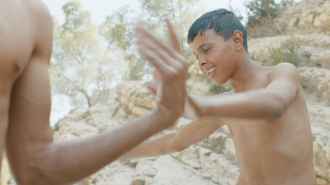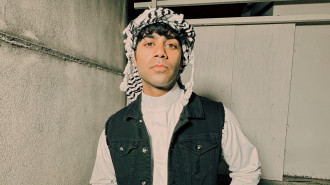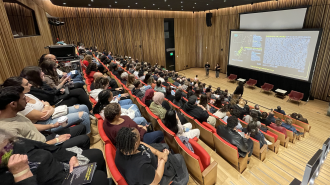
The hunger road: Somalis on surviving the worst drought in decades

This article was originally published in The New Humanitarian, an independent, non-profit newsroom specialised in reporting humanitarian crises.
Mogadishu - Al-Hidaya is just one of hundreds of makeshift camps on the outskirts of Mogadishu where exhausted people, escaping drought and conflict in south-central Somalia, arrive each day, desperate for help.
Yet there’s little aid available for the more than one million people who have fled their homes this year, and the grim reality is they will continue to risk hunger, disease, and death.
When The New Humanitarian visited al-Hadiya last month, Amina Yusuf Mohamed, 20, was standing outside the small bivouac-shaped shelter she had constructed from scraps of cloth and plastic sheeting, her sick young son, Zakariya, on her hip.
"At least 7.8 million people are going hungry – millions in a “crisis” category in which the frailest die. Without a rapid expansion of aid deliveries, famine is predicted in the more inaccessible areas of the south-central region, and far more deaths"
Mohamed, a widow, had arrived in al-Hidaya a week earlier from Kuntuwarey, a farming town in the Lower Shabelle region. It was once the breadbasket of Somalia, but is now parched and barren after four seasons of the worst drought in decades, a climate disaster that has left millions hungry and destitute.
Mohamed’s farm had produced next to nothing during the April to June “Gu” harvest, and none of her neighbours had food to spare or money to lend. “I left because of hunger,” she told The New Humanitarian. “There is no food there.”
Carrying her five-year old son suffering from diarrhoea, she walked for two days and nights without food or water until she reached Afgoye, 30 kilometres from Mogadishu. From there, she was able to hitch a ride on a truck to al-Hidaya, pinning her hopes on finding aid.
Despite the hardship of the journey, she was empty handed. “I need food, but nothing has arrived since we came,” said Mohamed. “What can I do? I pray to God so that God can bring us food – there’s nothing else I can do.”
There is an even deeper tragedy. In trying to save Zakariya, Mohamed had to leave behind her aged mother, too frail to travel. She asked her neighbours to keep an eye on her, but doesn’t really know how she will manage alone. “If she is alive, we will meet here, or back in the village,” was all she could say, the emotions still raw.
Drought and conflict
At least 7.8 million people are going hungry – millions in a “crisis” category in which the frailest die. Without a rapid expansion of aid deliveries, famine is predicted in the more inaccessible areas of the south-central region, and far more deaths.
Much of rural Somalia – including the area Mohamed is from – is under the control of the jihadist group al-Shabab, which has been battling the federal government for more than two decades. They ban Western aid operations, fearing espionage and dilution of political influence.
At least 1.1 million people have left the worst-affected regions of Lower Shabelle, Middle Juba, Bay, and Bakool this year, escaping both drought – with an unprecedented fifth season of failed rains looming – and an upsurge in fighting between al-Shabab and the government.
There are literally hundreds of small camps sheltering displaced people along the Afgoye road, which links Mogadishu to the southern hinterland. These settlements – typically hosting between 700 to 1,000 families each – are privately run, and only sporadically reached by the NGOs that aid agencies typically outsource relief work to.
The so-called “gatekeepers”, who manage these private settlements, assign new arrivals a plot of land to build a shelter and provide basic services – including security, and help in emergencies. In return, they get a cut of whatever relief rations the displaced receive.
In al-Hidaya, 13 kilometres from Mogadishu, more than 1,370 families are squeezed onto a small patch of land, with 100 to 200 new arrivals trudging in daily. There is just one water point, no toilets, and no health post.
“People are arriving every day. They are facing many problems,” said camp manager
Nadifo Hussein. “We are sometimes putting four to five people into one overcrowded shelter.”
The conditions have contributed to an outbreak of measles – a contagious respiratory disease, often fatal in children. Diarrhoea is also widespread. Over three days of interviews in al-Hidaya, The New Humanitarian met several mothers who had buried at least one of their children due to these easily treatable viral infections.
"Drought victims living in al-Shabab areas face a precarious dilemma...They either have to flee to government-controlled areas and receive support there, or stay put … Whatever action they take, help is not always guaranteed"
“My son died here yesterday, he was sick for a week,” said a grieving Khadija Mohamed. “He was having measles and he started to cough; then he died.” He was the second of her four children to die in the camp since she arrived from Dinsoor, in the Bay region, two months ago.
Funding has come too late
Despite plentiful early warning that Somalia was facing disaster, aid has been slow to arrive. Even in May, financing for the $1.5 billion response plan was being described as “woeful”. The UN recently upped its appeal to $2.2 billion to meet ever-growing needs, but it’s still only 45% funded. A weak federal government is almost wholly dependent on the response of the international system to feed its citizens.
Somalia’s extreme insecurity also impacts aid work. Relief operations by Western aid agencies – when they leave their heavily guarded green zone bubble – involves squads of armed escorts, detailed coordination, and lasts no longer than 30 minutes.
And for good reason. The New Humanitarian heard a bomb explosion not far from al-Hidaya on one trip to the camp. On the way back to Mogadishu, the road was blocked after the security forces found and defused another device. There were no casualties in either incident.
Kuwait-based Direct Aid, and the local Zamzam Foundation, are the only two NGOs working in al-Hidaya. Direct Aid provides a month’s ration of rice, dates, milk powder and cooking oil to 300 families, and some high-calorie Plumpy’Nut for children – but there is never enough food to go around.
The lack of aid means that Mohamed, like other new arrivals, relies on the charity of her neighbours. The few odd jobs people have found buys a little food. This, augmented by whatever rations people still have, is all cooked up once a day and communally shared.
Amina Ali was another new arrival looking for help. She had come from her village in the Lower Shabelle region three days earlier with her four children and no husband – he had recently died after a short illness.
Ali and the children walked for three nights with three other families until a driver picked them up in Qoryoley, about 200 kilometres south of Mogadishu. “The others went to other places, but we came here,” she said.
When she arrived, she was assigned a patch of ground by Hussein, the camp manager. Ali was then helped by other women to collect wood to make a shelter – a traditional pastoralist skill that involves driving a circle of sturdy branches into the ground for the frame, and weaving fronds between the poles to bind them.
Ali had to scrounge at the local garbage dump to find bits of discarded cloth to cover her shelter – luckier, longer-term displaced, have plastic sheeting to insulate theirs. She would now have to wait to register for basic help with Direct Aid or the Zamzam Foundation – or find assistance from local mosques and businesses.
|
‘A drop in the ocean’
Registration doesn’t guarantee aid. Hakimo Gabow had arrived two months previously with her eight children and husband, but still hadn’t received a food ration. When the New Humanitarian met her, she had queued up early in the morning for Plumpy’Nut, but the supplies had all gone before she reached the front of the line. “My children are hungry now,” she said resignedly.
Drought is indiscriminate. Gabow was a wealthy land and livestock owner in the Bay region before the rains failed. Her 80 camels alone were worth close to $60,000, and she had hundreds of goats. Worth $150 each, they’re now all gone – among the millions of animal victims of the drought. Hussein, the camp manager, has had to help her out with a kilo of rice from a store she keeps for emergencies.
While food is the priority for most people in al-Hidaya, Hussein is also worried about the lack of health services. “The children are dying because of diseases such as measles and malnutrition,” she said.
Expectant mothers are also at risk, but there is little help for them either. “We only get mobile health teams from Zamzam or Direct Aid,” Hussein explained. “There is no mother and child health centre.”
Hassan Ahmed Sheikh, the director of Direct Aid, acknowledges that far more must be done; that the international community needs to rally now to avert “catastrophe”. The “aid is not enough,” he said. “It’s only a drop in the ocean compared to the needs of the people here.”
Opened in April this year, al-Hidaya is built on a plot of land Nadifo Hussein inherited from her father. It’s one of hundreds of private camps that have sprung up along the so-called Afgoy corridor, the sole road linking Mogadishu to the south-central regions, where land is cheap.
The gatekeeper phenomenon is controversial. In a country with no formal camps, gatekeepers have developed a business around accommodating Somalia’s three million displaced. They provide basic services – including protection, dispute resolution, and financial help in emergencies – in return for a cut of the aid ration.
But government authorities consider them parasitic, and international aid agencies turn a blind eye – even though gatekeepers typically demand 10 to 30 percent of the food or cash that is delivered. At its worst, the system is violent and exploitative, with the displaced literally traded between gatekeepers and landowners. Yet it is also a pragmatic – and deeply entrenched – arrangement.
Al-Shabab has historically been hostile to Western aid agencies. It banned the World Food Programme in 2010, arguing that its aid undermined local farmers. That embargo contributed to the famine in 2011, in which nearly 260,000 people died, many of them children.
US counter-terror legislation, which inhibits direct humanitarian engagement by US-funded agencies with al-Shabab, also hurt the 2011 aid effort – although the restriction was eased during the 2016 to 2017 drought. It remains unclear if that will be the case this year.
“Drought victims living in al-Shabab areas face a precarious dilemma,” Mohammed Ibrahim Shire, a Horn of Africa analyst, explained. “They either have to flee to government-controlled areas and receive support there, or stay put … Whatever action they take, help is not always guaranteed.”
Abdalle Ahmed Mumin is a freelance journalist based in Mogadishu
Follow him on Twitter: @Cabdalleaxmed
Edited by Obi Anyadike, The New Humanitarian
This article was originally published in The New Humanitarian, an independent, non-profit newsroom specialised in reporting humanitarian crises.
![[photo credit: Abdirahman Ahmed Adan/The New Humanitarian]](/sites/default/files/styles/medium_16_9/public/2022-11/MVI_6756.MP4_.00_06_15_02.Still001.jpg?h=d1cb525d&itok=ajhokl0I)
![[map credit: The New Humanitarian]](/sites/default/files/2022-11/Somalia-Fews%20map.jpg)
![[map credit: The New Humanitarian]](/sites/default/files/2022-11/somalia%20drought%20regions%20map.jpg)
![[credit: Abdirahman Ahmed Adan/The New Humanitarian]](/sites/default/files/styles/medium_16_9/public/2022-11/Camp4.jpg?h=116a581e&itok=ioc1D1II)
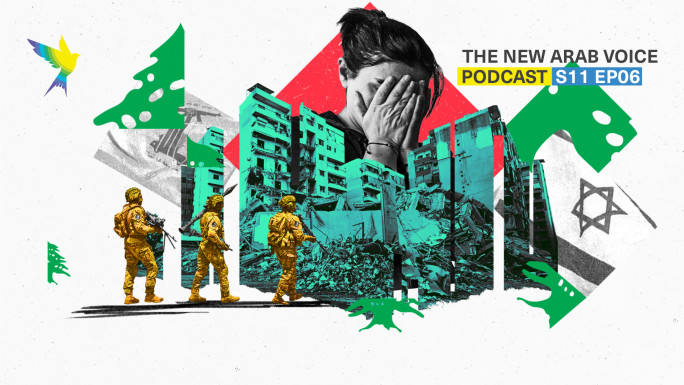
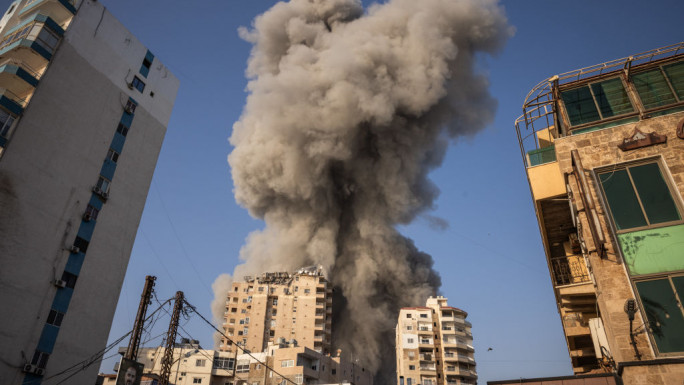
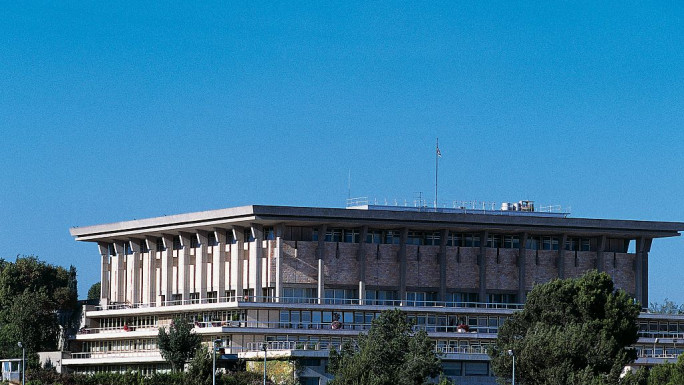
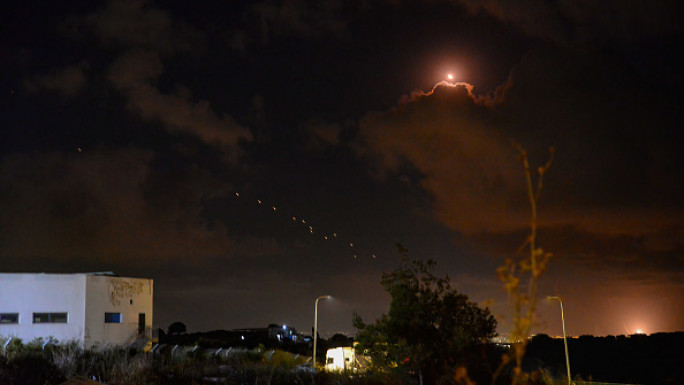
 Follow the Middle East's top stories in English at The New Arab on Google News
Follow the Middle East's top stories in English at The New Arab on Google News
